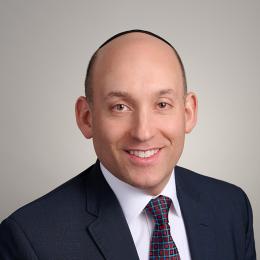How Today’s Challenges Are Reshaping Long-Term Care
Discover how shifts in the long-term care landscape are helping build a more supportive and inclusive future for everyone.

As we get older, we may need support with activities of daily living such as bathing, dressing, or eating. Some people can receive this support at home, while others may find that care from a supportive living environment better meets their needs.
For people who require ongoing medical care — such as monitoring and managing medical conditions or providing specialized care for respiratory needs, wounds, catheters, ostomies, or other medical interventions — skilled nursing care can provide this alongside nutritious meals, therapy and wellness programs, social engagement opportunities, and spiritual care.
These services, which range from home care to facility-based care, are collectively known as long-term care. Long-term care is an invaluable part of the health care continuum for older adults. However, the sector — especially facility-based long-term care — is also experiencing several stressors that present opportunities for growth and innovation.
At Hebrew SeniorLife, New England’s largest nonprofit provider of senior care services, we’re uniquely positioned to deeply understand the long-term care industry’s challenges and to offer solutions so older adults can continue to thrive as they age. Here, I’ll share my perspective on some of the challenges and briefly share potential solutions. In a follow-up blog post, I will dig deeper into emerging solutions that could help long-term care evolve to meet our changing needs as an aging population.
What’s putting pressure on the long-term care landscape?
People are living at home longer
More older people are staying at home for longer, which is generally a positive development. Many older adults can tap into the support of family care partners and other available services to achieve their goal of staying at home for as long as possible. But in certain cases, fear of congregate care settings (which intensified during the COVID-19 pandemic) or a lack of financial resources are driving the decision to stay at home. For some people, this can compromise care, place additional demands on family caregivers, or increase social isolation and loneliness.
Regardless of the reason behind the trend toward aging at home, the outcome has been fewer occupied beds in long-term care facilities. As a result, some have closed. On one hand, this could seem like a market shift that will further promote aging in place. But given the projected growth in population of older adults, facility-based long-term care remains a valuable and needed service, even with shifting preferences.
In the United States, the number of people over 65 is estimated to increase to 82 million by 2050 from 58 million in 2022. Even if a smaller percentage of older people use long-term care services, the total number of older people using long-term care services will likely increase due to population growth. These complicated pressures on both supply and demand need to be addressed.
Further, because people want to stay at home for as long as possible, they may transition into facility-based long-term care at a later age with more complex care needs. These more intensive stays can require more staffing and specialized services, increasing costs for long-term care facilities. This makes it even more essential to modernize how we deliver care, both at home and in long-term care facilities.
Workforce shortages and wage increases
From an operational perspective, the long-term care workforce remains a challenge. Investing in and supporting workers is crucial, but with current staffing challenges, plus wage growth and inflation, that isn’t always easy.
The pandemic exacerbated staff shortages, with long-term care facilities losing over 400,000 workers between March 2020 and March 2022. To attract workers, the industry has needed to significantly raise wages. That included many temporary agency staff, who are much more expensive to hire and retain. Increased wages strengthen our workforce and acknowledge workers’ valuable role in improving people’s lives.
However, these increases for organizations already working within tight financial margins challenge long-term sustainability.
Years later, workforce shortages are still widespread, and over 40% of the Massachusetts long-term care workforce is comprised of immigrants from many countries. Changes to immigration policy have added to the workforce and sustainability challenges.
Knowing that frontline workers are at the heart of what we do, at Hebrew SeniorLife, we go out of our way to provide a workplace that our workers love. Creating a positive work environment means going above and beyond to foster an environment that people don’t just work in, but are proud to be part of. For example, we prioritize creating opportunities for our employees to learn new skills and advance in their careers. This increases their job satisfaction and also allows us to provide better care for our patients. Read our blog post about why nurses thrive at Hebrew SeniorLife to learn a little more about how we empower our direct care staff.
More recently, we launched the Hebrew SeniorLife Lunder Careforce Institute, where we will teach and train nursing assistants, practical nurses, and other allied health professionals, ensuring a continued pipeline of geriatric caregivers.
Medicaid reimbursement rates
Patients and residents of long-term care facilities are most often enrolled in Medicaid, which supports the member’s stay. In Massachusetts, the name for the state’s Medicaid program is MassHealth.
At many long-term care facilities, Medicaid is essential to providing high-quality care for older adults and others with complex health needs. Through MassHealth, organizations receive funding that sustains services and expands the capacity to serve the community.
At Hebrew SeniorLife’s long-term chronic care hospital, we offer a higher level of medical care not found in traditional long-term care settings. Our collaborative relationship with MassHealth has helped us continue to deliver high-quality care to our patients. However, factors such as state budgets and federal regulations can influence the Medicaid reimbursement rates we are able to receive.
If Medicaid reimbursement rates decrease, organizations may be forced to reduce services or delay necessary improvements. Additionally, because Medicaid is a joint program between the state and federal governments, cuts to the federal budget may affect reimbursement rates, even if the state budget remains the same. If the price of operating a long-term care facility continues to rise and reimbursement rates don’t keep up, facilities could find it challenging to maintain their existing level of operations.
Regulations and fixed costs
Some costs in the long-term care sector can’t be adjusted. One example is staffing ratios, which are determined by state and federal regulations and set the required number of staff members per patient or resident.
In addition to state and federal rules, long-term care facilities that rely on Medicaid or Medicare payments will need to comply with an April 2024 rule issued by the Centers for Medicare and Medicaid Services on minimum staffing requirements for nursing homes. As of May 2024, only 6% of nursing homes had met all four requirements. If long-term care facilities don’t have the resources to hire more staff to meet those requirements, they may have to limit the number of residents or patients they serve.
However, ongoing litigation and a 10-year implementation delay included in the recently signed One Big Beautiful Bill Act mean these minimum staffing requirements have yet to be implemented.
While these staffing regulations apply to traditional nursing homes, Hebrew SeniorLife’s long-term chronic care hospital operates under hospital-level regulations. We’re not subject to the federal minimum staffing requirement for nursing homes, but we consistently exceed those proposed benchmarks and Massachusetts staffing standards. As a result, we’re able to provide person-centered, compassionate care for patients with complex medical needs.
Conflicting financial incentives
Another challenge the long-term care sector faces is creatively coordinating payments with federal and state programs to drive desired care outcomes. At times, doing so isn’t straightforward because outcomes aren’t always aligned with the budgets of the programs that reimburse us.
One example is that Hebrew Rehabilitation Center, our long-term chronic care hospital, has a low acute care hospitalization rate, which is when a patient is transferred for short-term hospitalization due to serious injury or illness. That’s good news for our patients! However, Medicaid typically covers a member’s long-term chronic care, while Medicare typically covers acute hospitalizations.
When we prevent hospitalization, Medicare, which is federally funded, saves money. However, because Medicaid — federally funded separately from Medicare and supplemented by significant state contributions — pays for the patients’ long-term care and not hospital visits, it doesn’t benefit from the avoided hospitalization savings. Meanwhile, Medicare has no hospitalization-related services to reimburse, so it may not recognize or reimburse our success in keeping patients out of the hospital.
These challenges don’t reflect a flaw in programs like Medicare or Medicaid. These programs are instrumental in giving older adults access to the medical care they need. However, different organizations operate under their own regulations, budgets, and incentives, requiring more conversations around managing competing financial needs and desired care outcomes.
The path ahead for long-term care
While these challenges aren’t always straightforward to navigate, there are ways for us to come together to meet people’s changing needs and preferences. The future of long-term care might not look exactly the same as it does today, but it will continue to play a key role in the care continuum as we age.
One way we could better meet the needs of older people and their care partners is by emphasizing home and community-based services alongside facility-based long-term care. The GUIDE model, which stands for Guiding an Improved Dementia Experience, is one example. GUIDE focuses on outpatient service delivery and health interventions that improve the lives of people with dementia and their unpaid caregivers.
These services support patients and caregivers as they navigate the challenges of living with dementia, including resources to promote remaining at home for as long as possible, such as adult day health and respite care. Participating health care providers in GUIDE receive special payments to support the ongoing provision of these valuable services.
The GUIDE model is part of the promising area of value-based care, which involves aligning payment models with patient health outcomes instead of the traditional fee-for-service approach, where each service is billed separately. This approach can benefit patients, providers, and payers and is already seeing success.
As we age as a society, long-term care is at a turning point. It’s time to explore a future that allows us to continue honoring the preferences and dignity of older people to receive the appropriate level of care, where they want it, and when it’s needed, while addressing organizations' financial constraints. I’ll explore these models more in the second part of this series on the future of long-term care.
Blog Topics
Learn More
Long-Term Chronic Care
Hebrew Rehabilitation Center provides person-centered extended medical care in a homelike setting for patients with chronic illness. As a licensed long-term chronic care hospital, we provide higher-level, more comprehensive medical care to older adults than a traditional nursing home.





